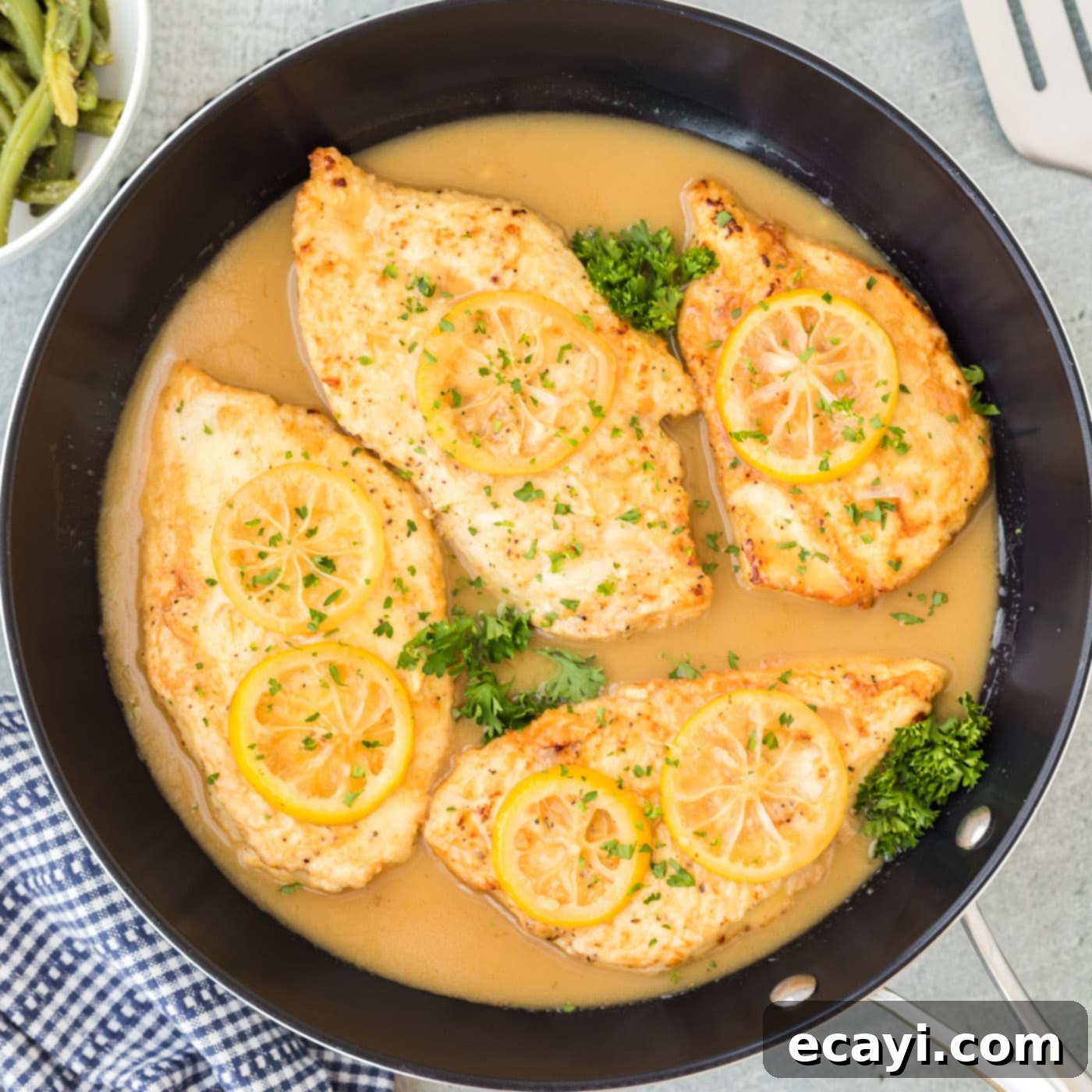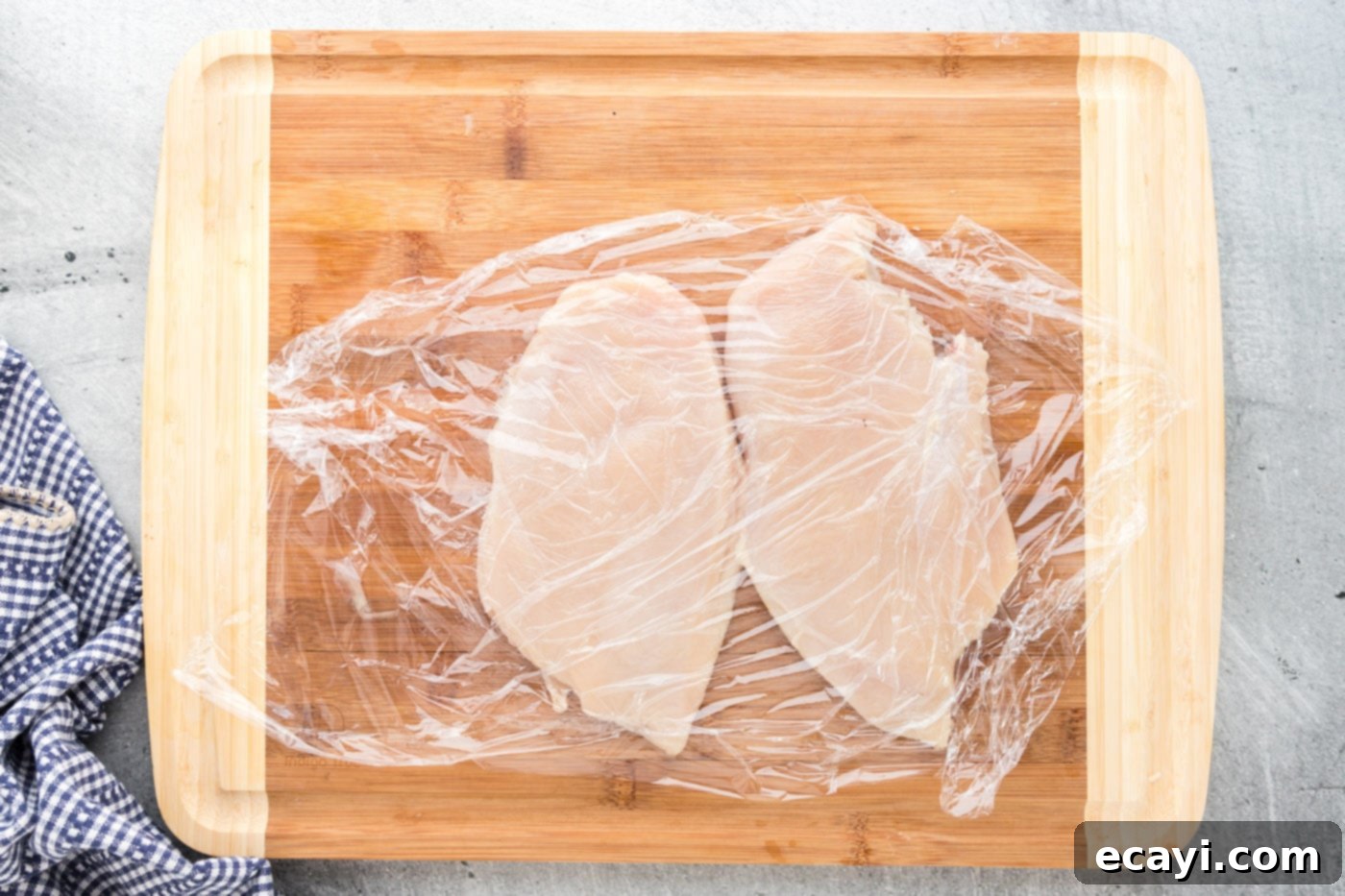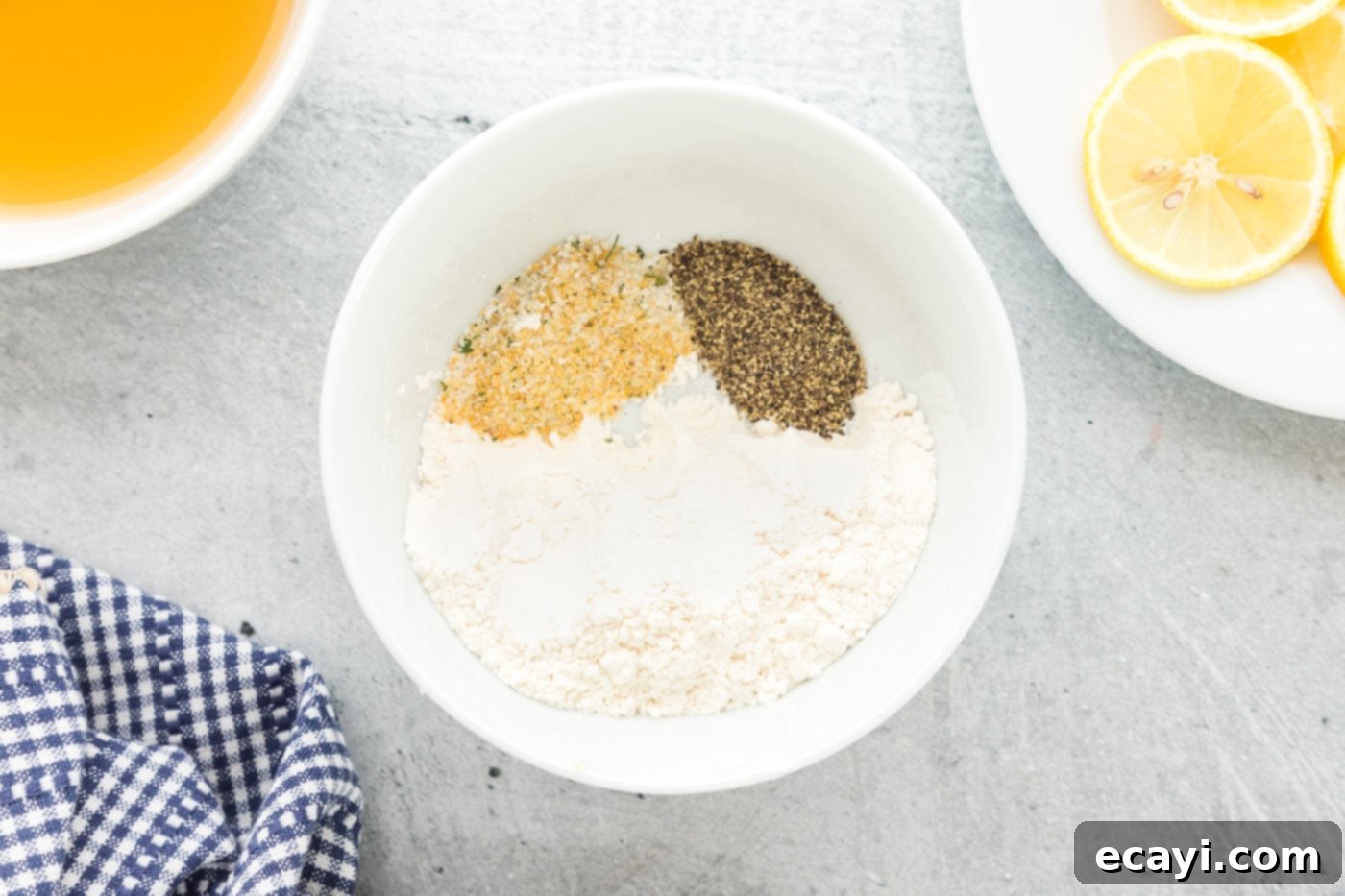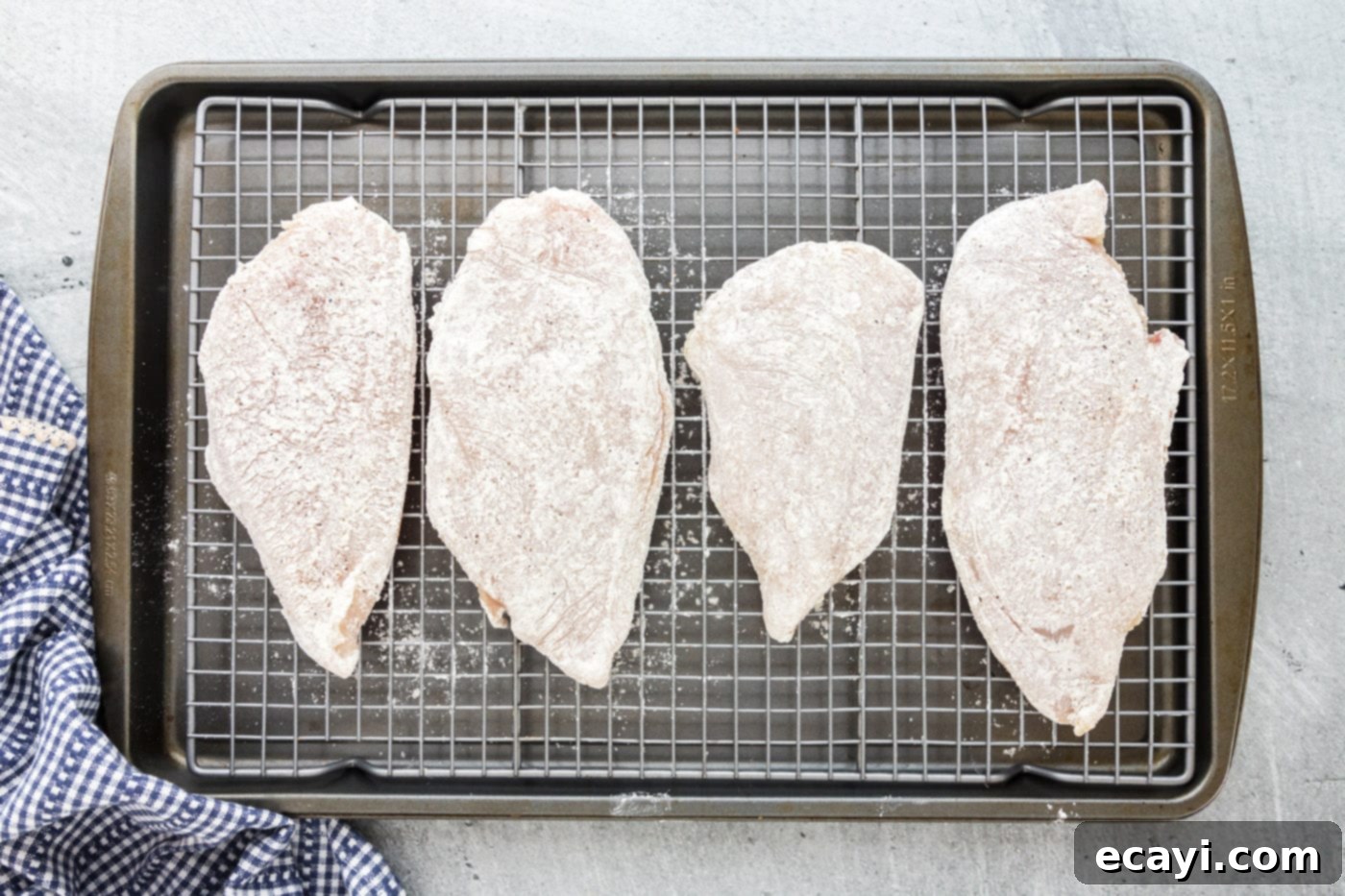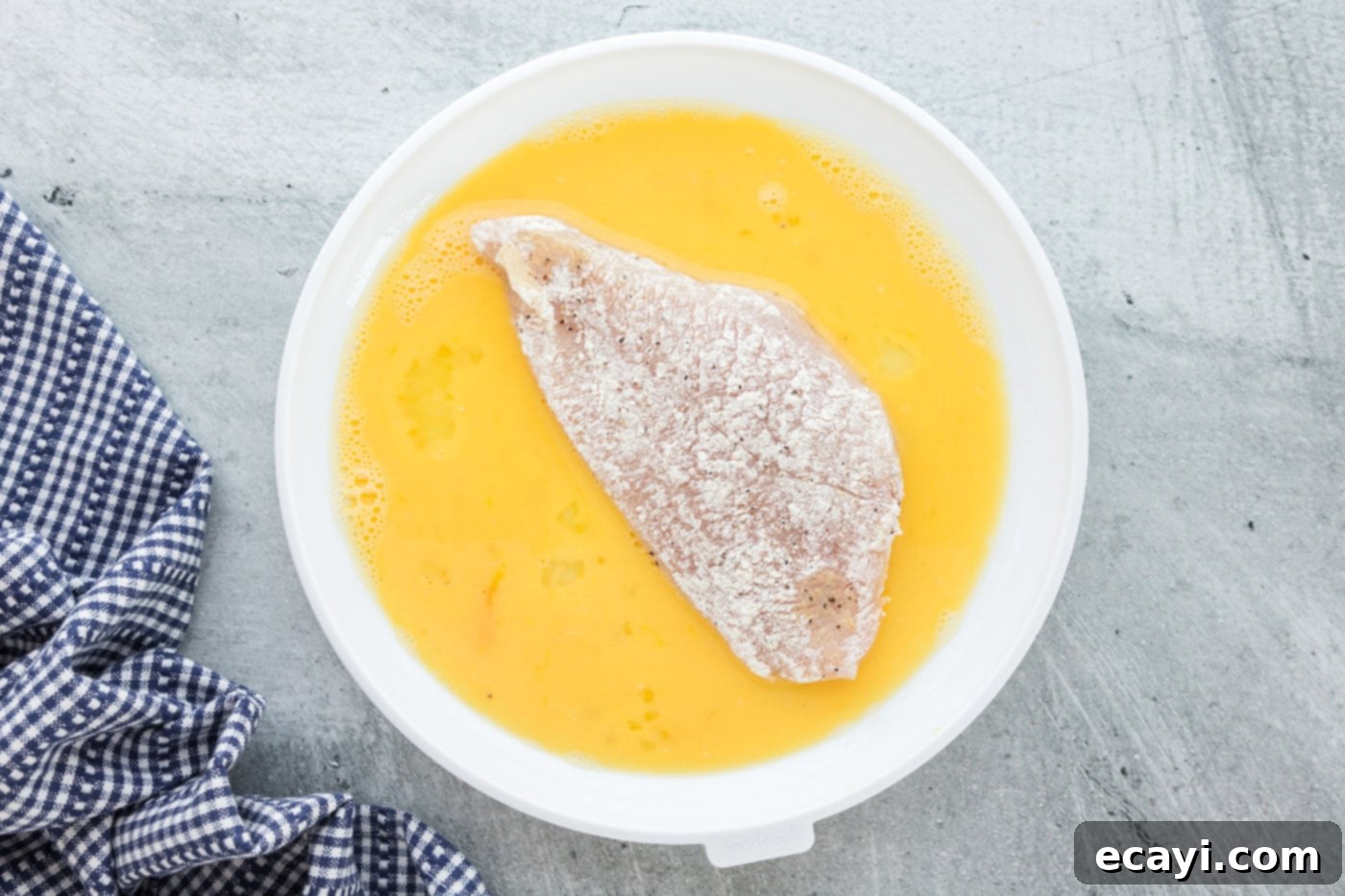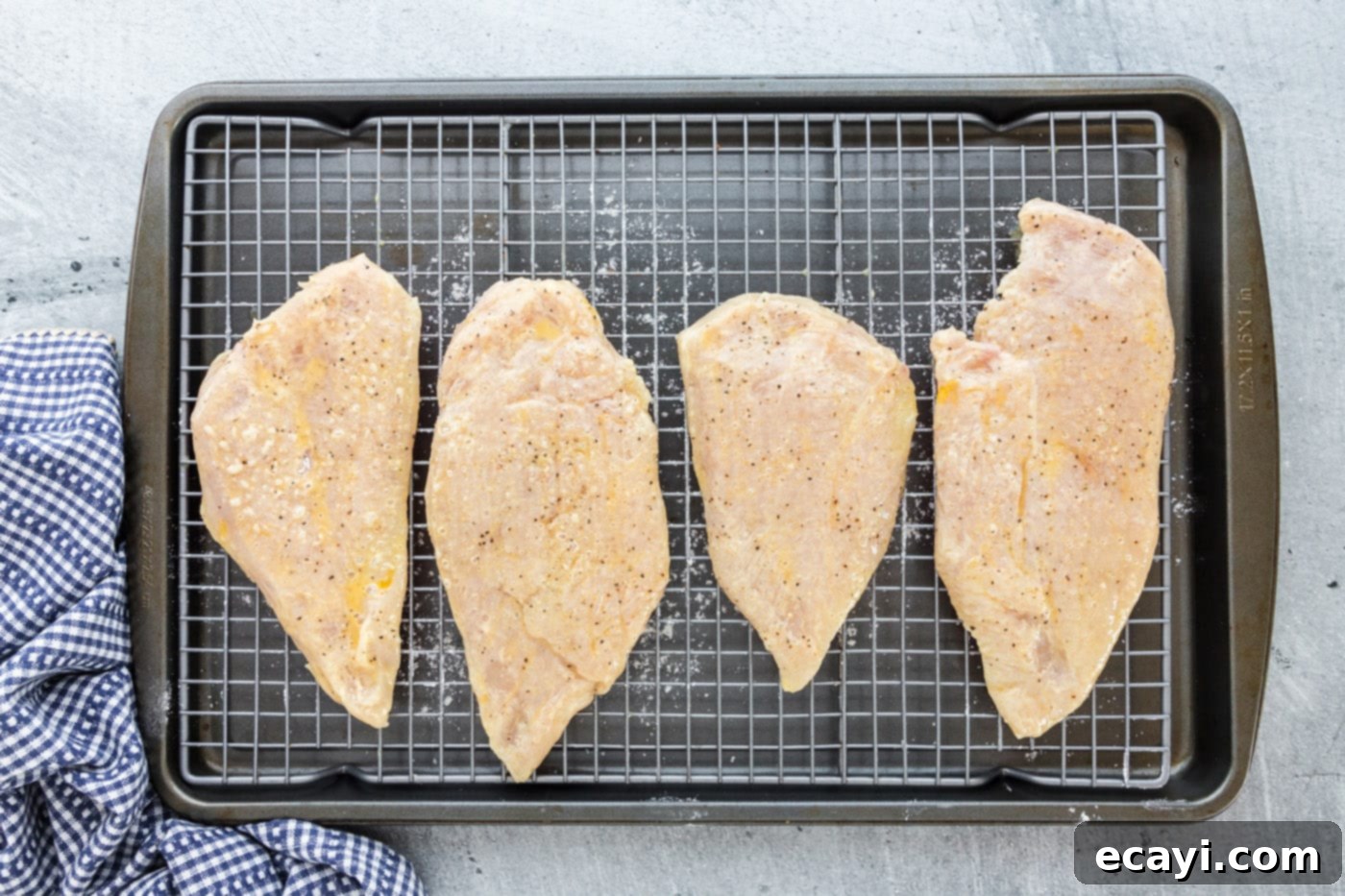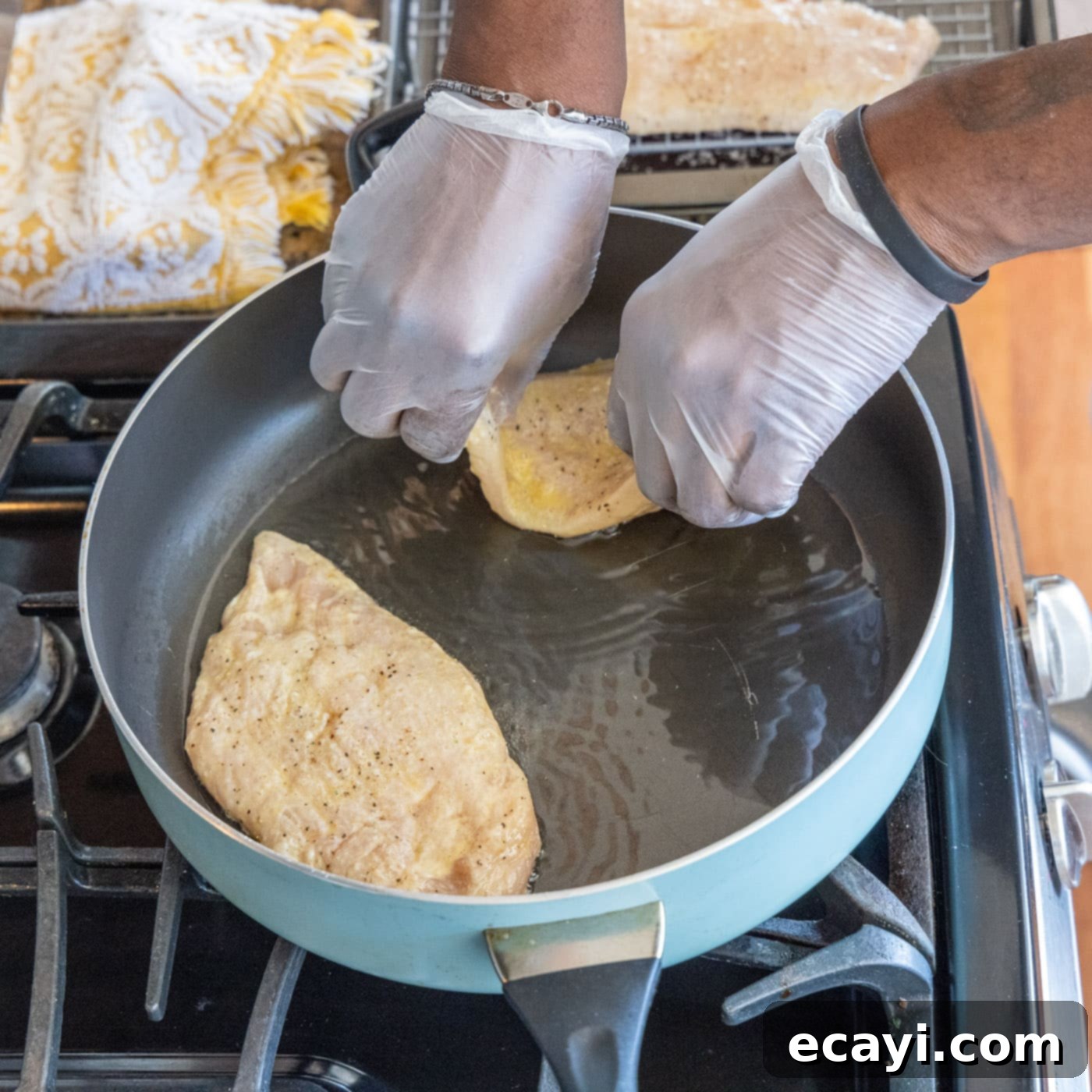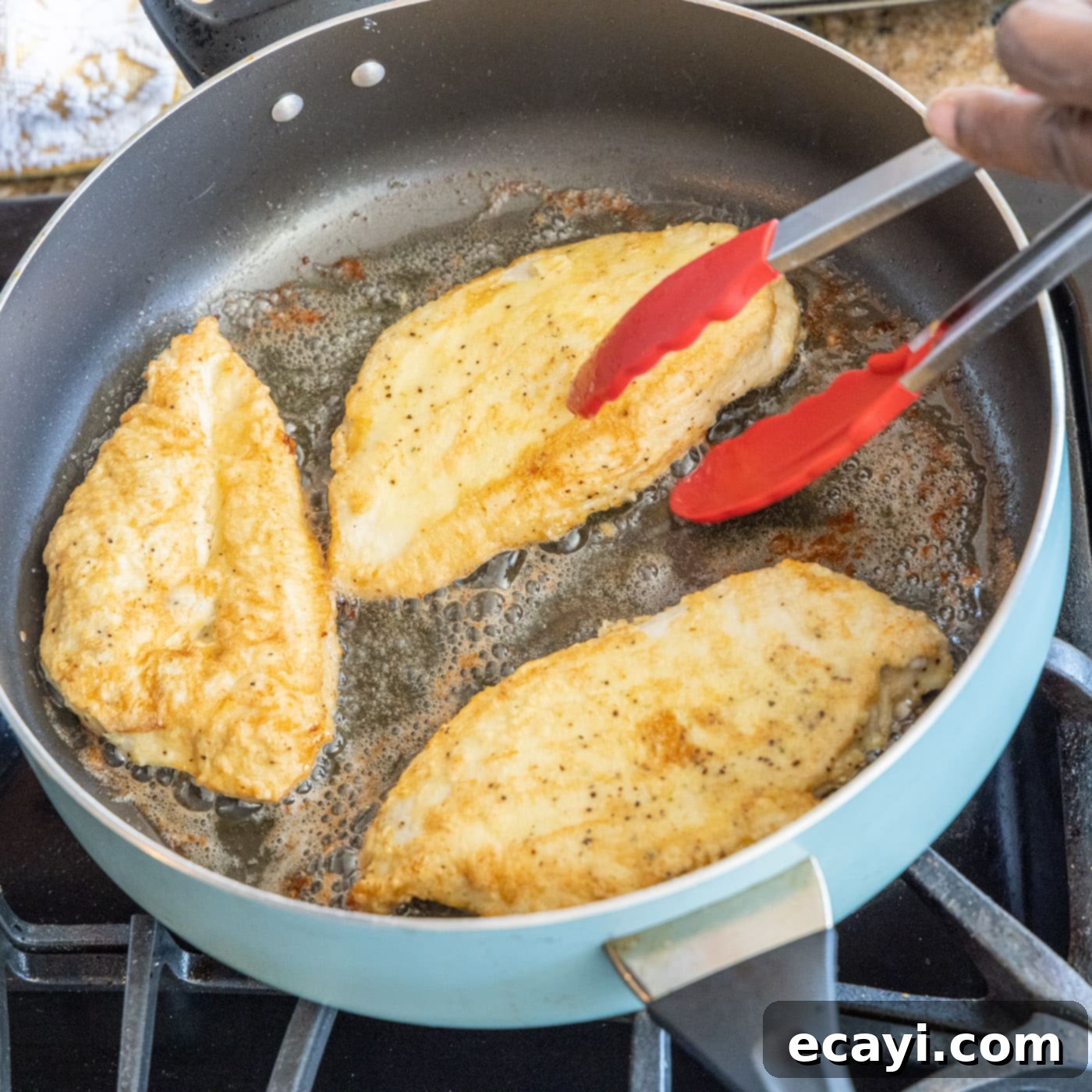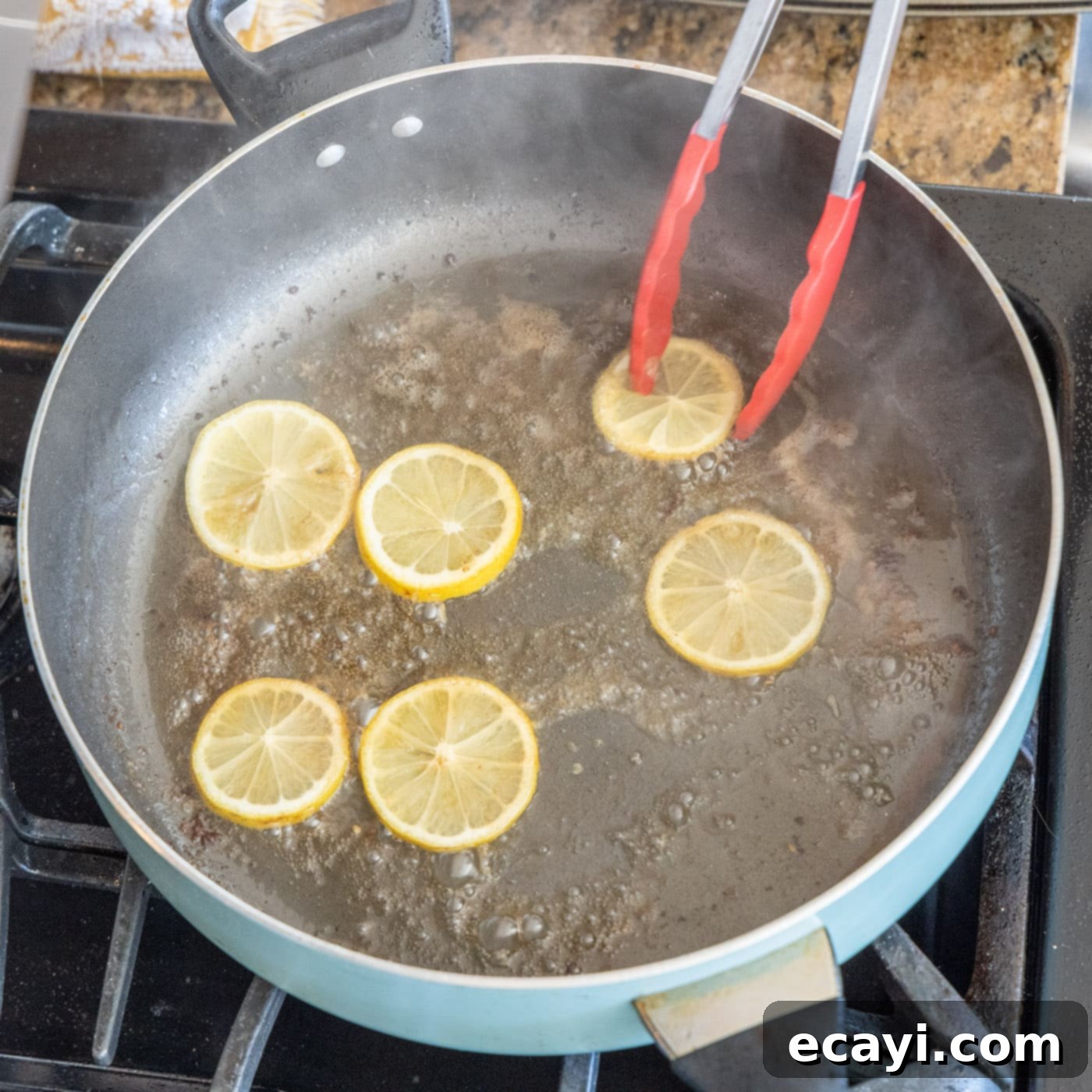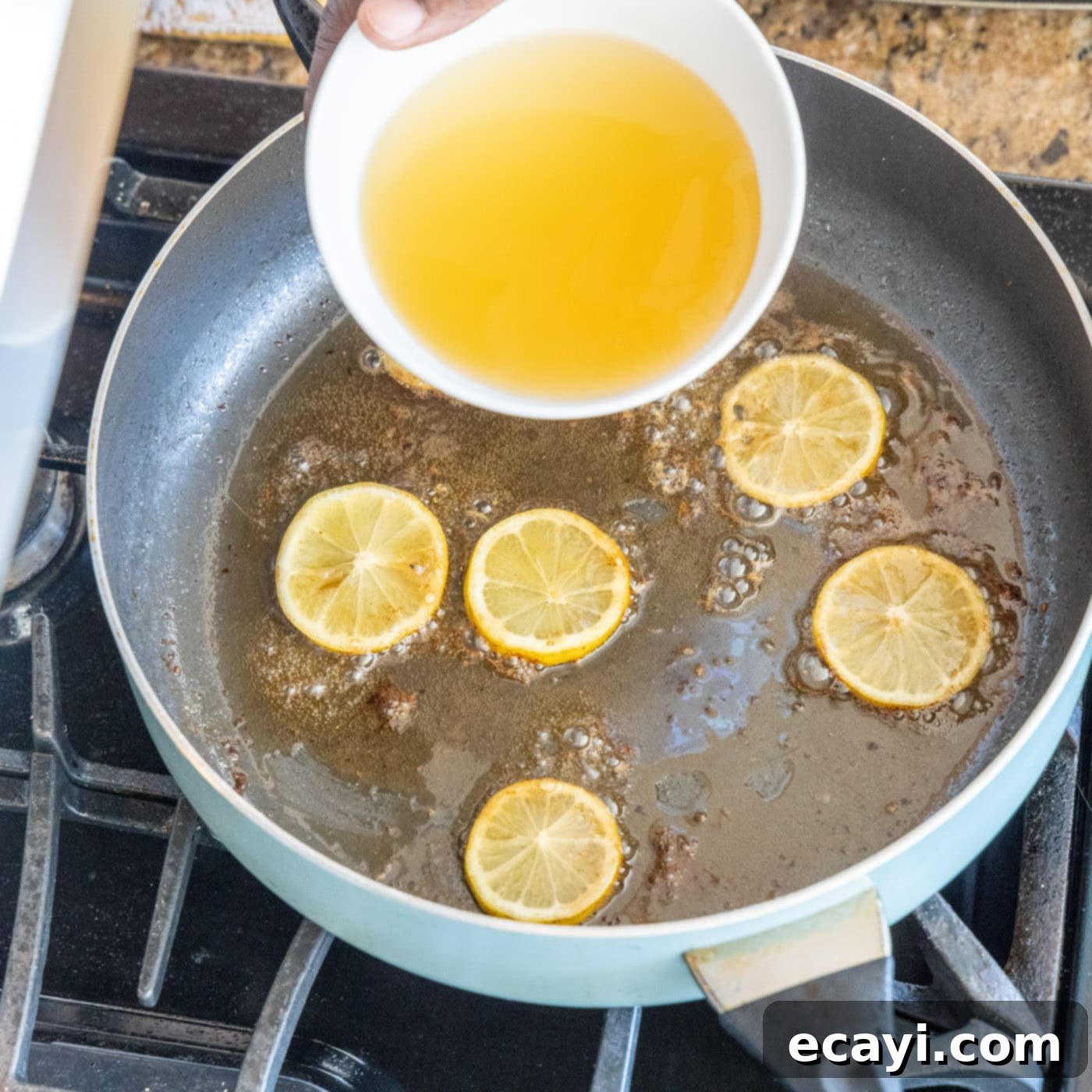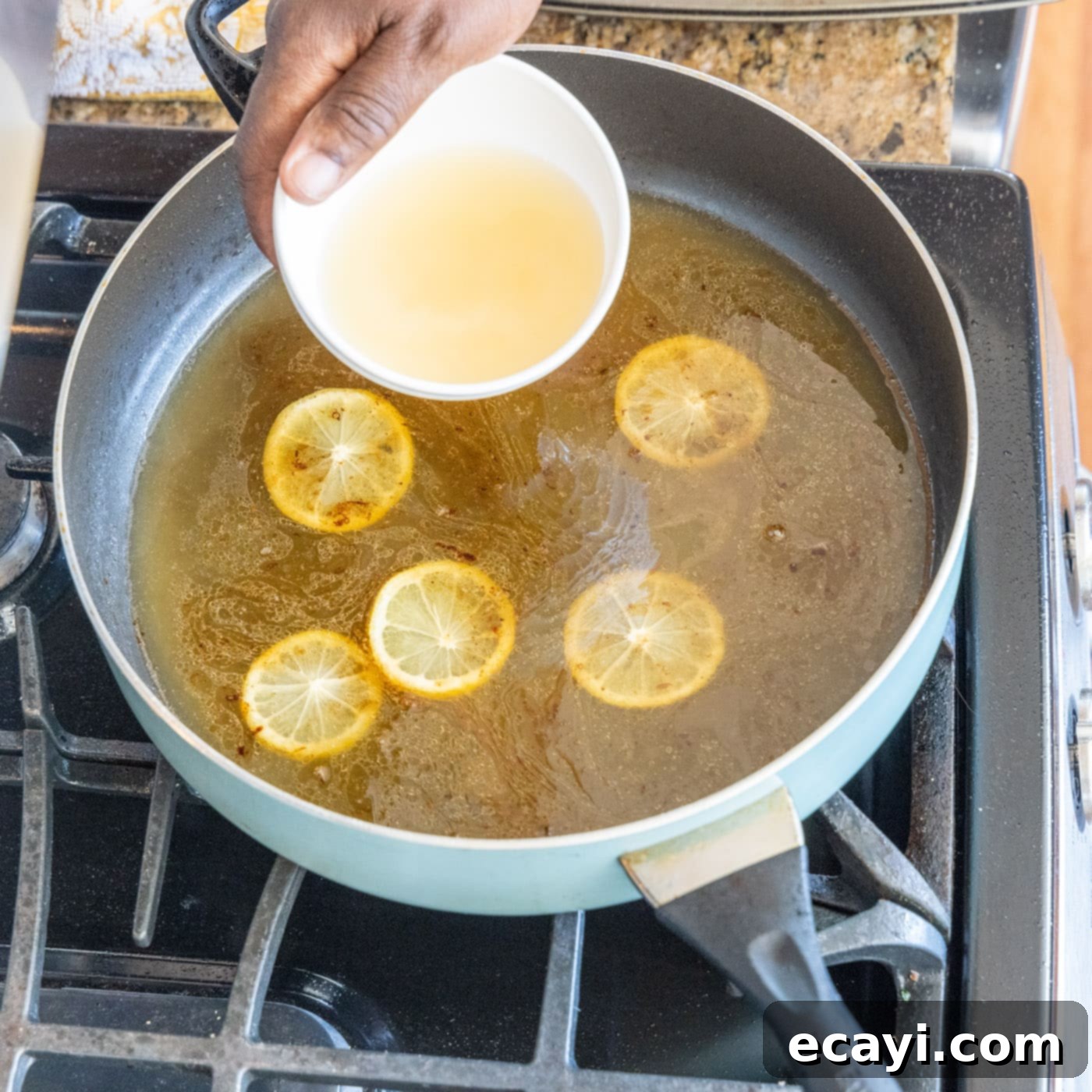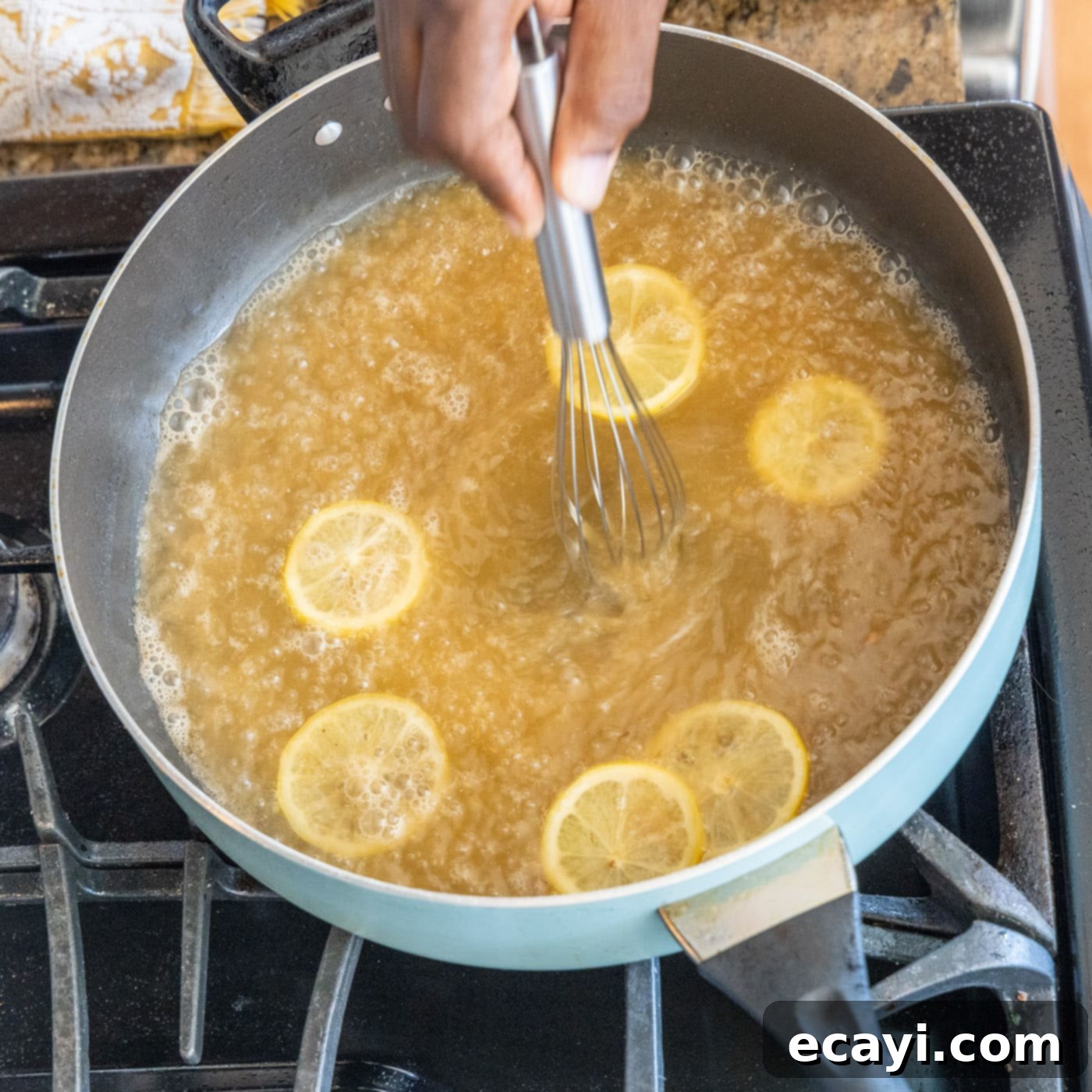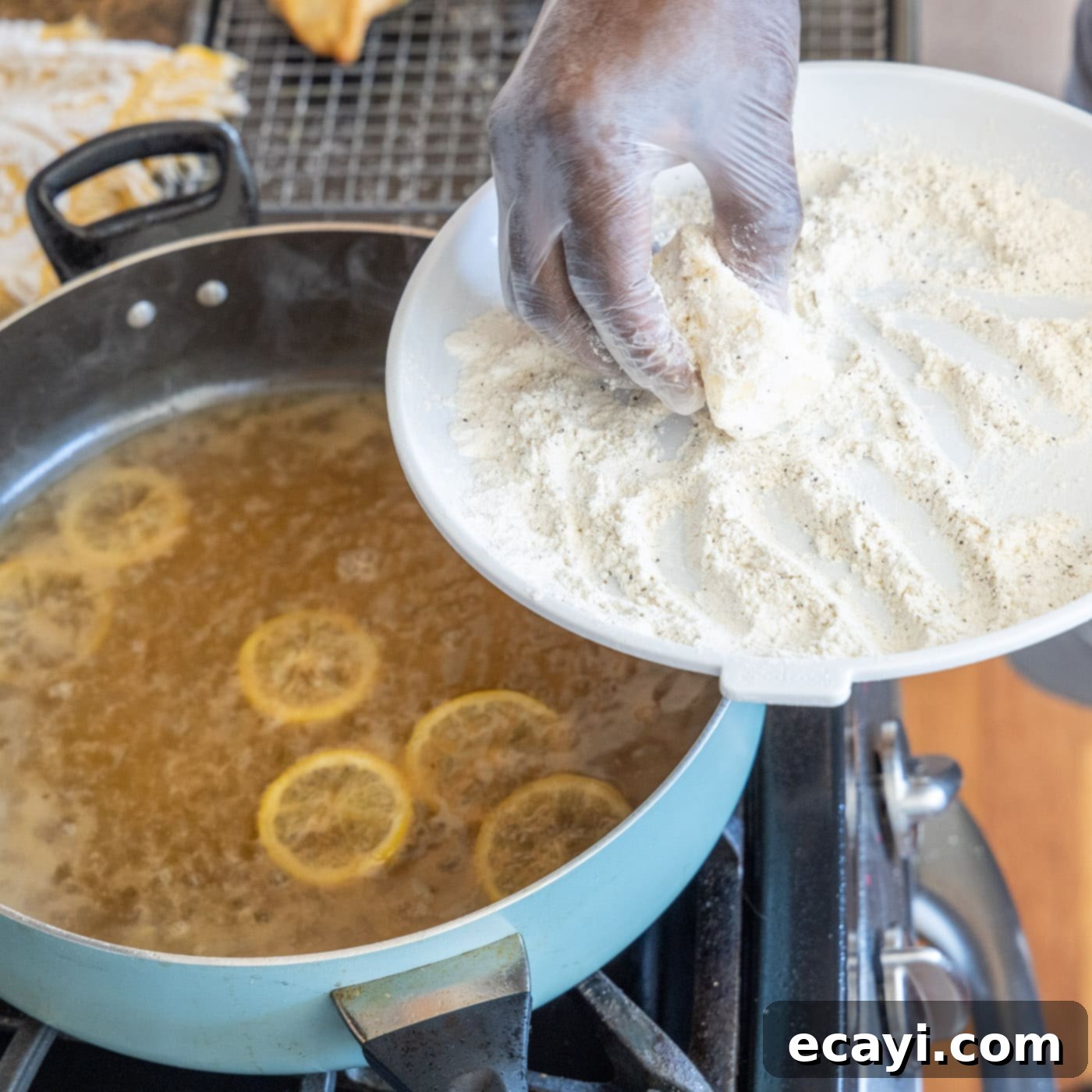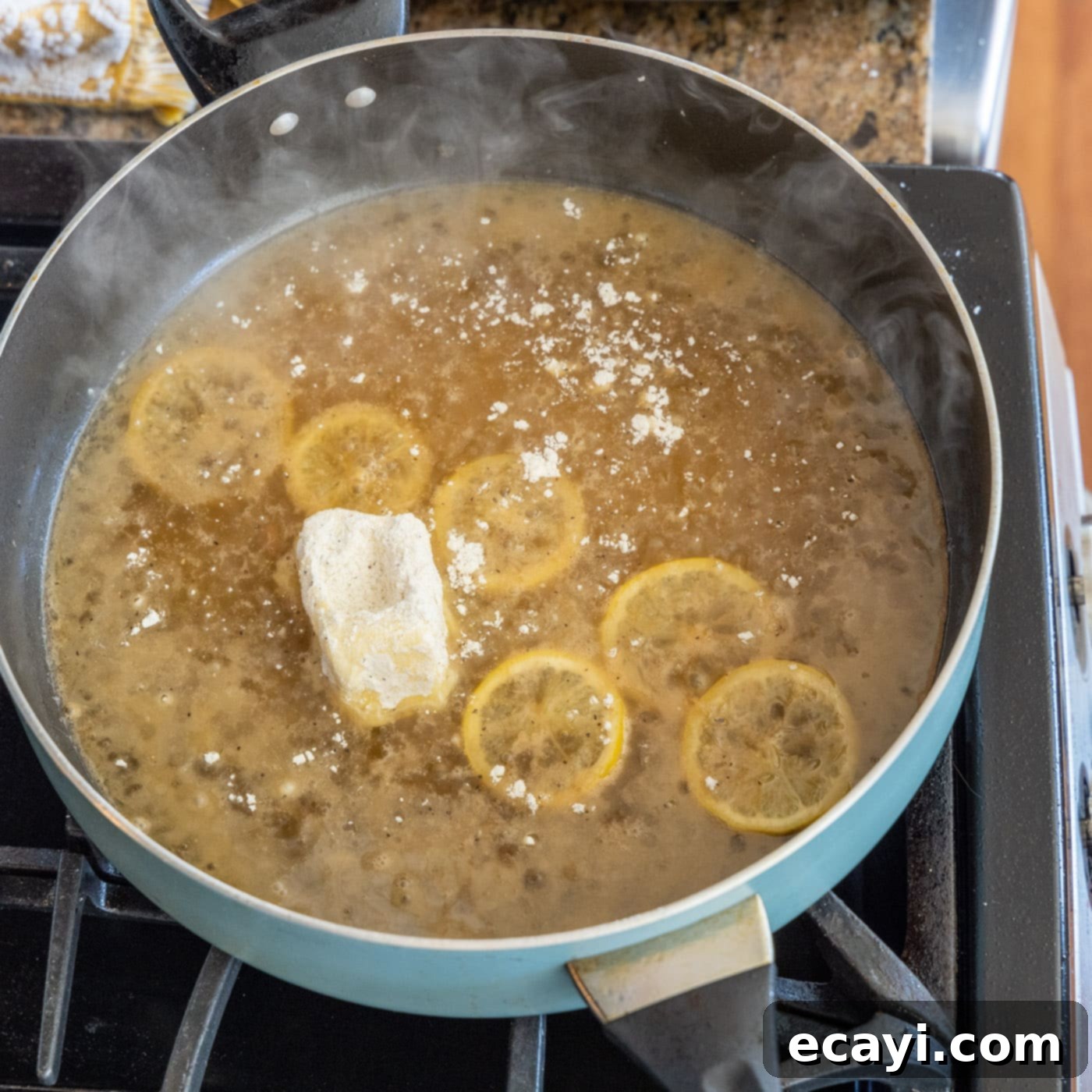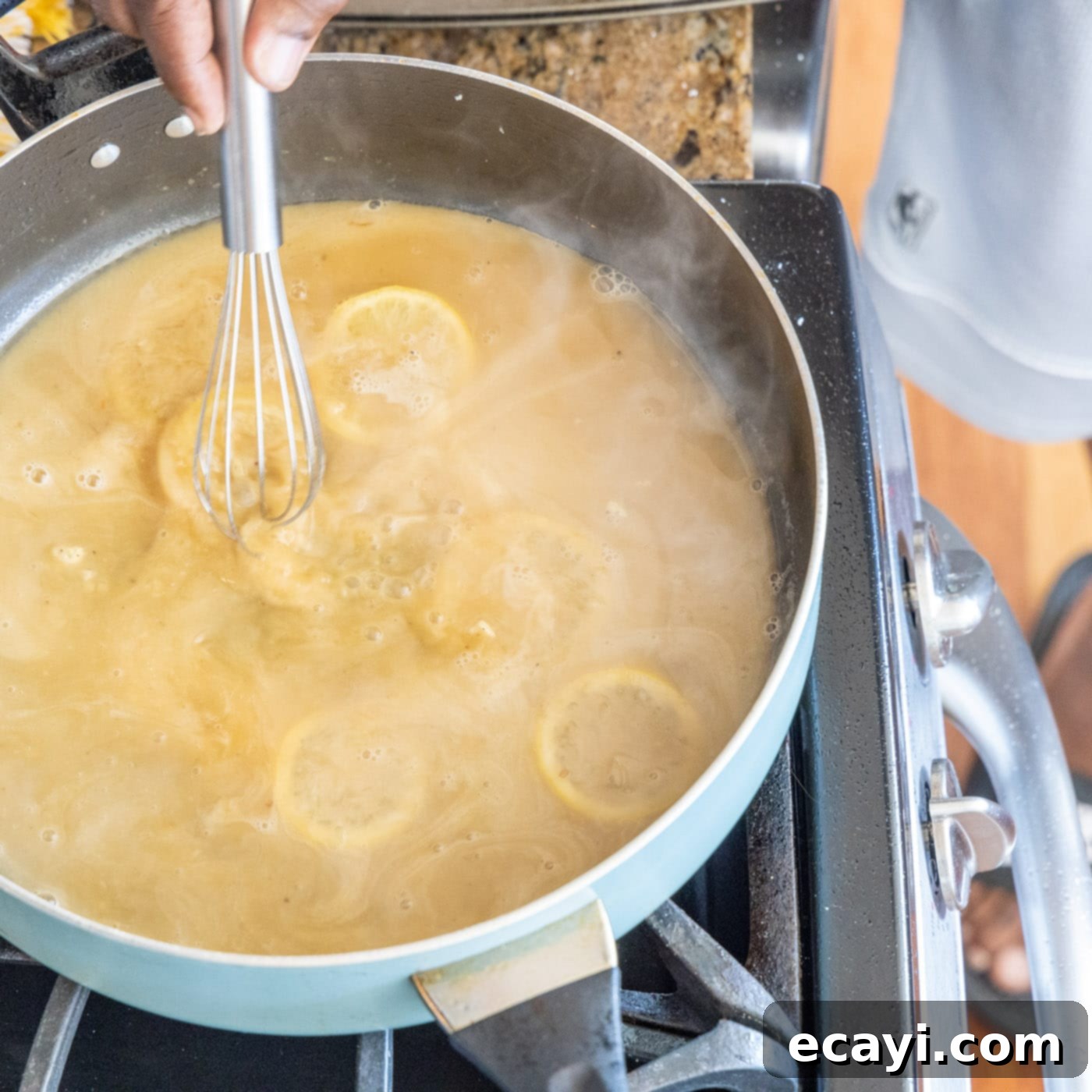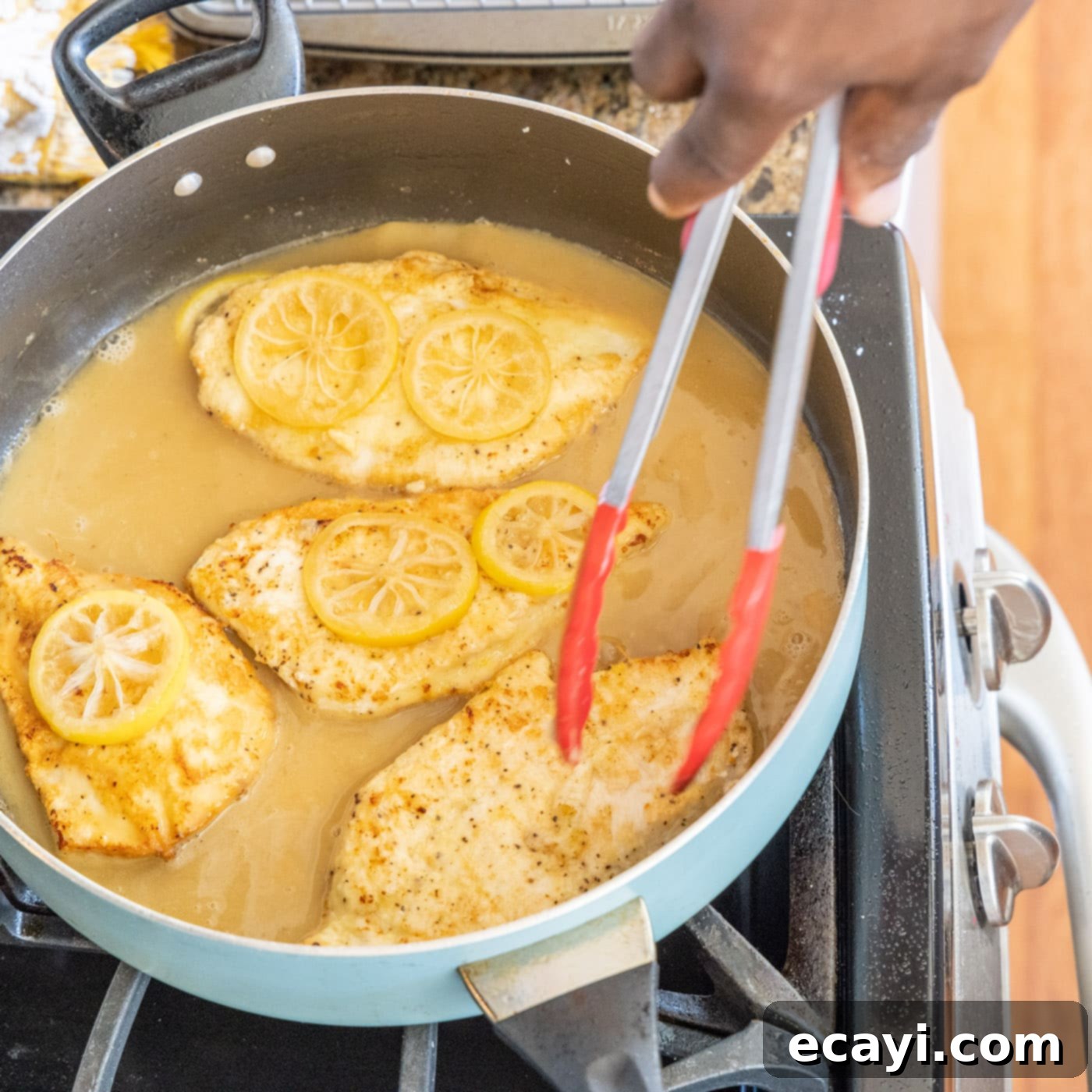Classic Chicken Francese: An Easy & Elegant Lemon-Butter Sauce Recipe
Indulge in the exquisite flavors of Chicken Francese, a dish that transforms simple pounded chicken breasts into a culinary masterpiece. Marrying the bright, refreshing tang of fresh lemon with a rich, velvety white wine-butter sauce, this recipe promises an unforgettable dining experience. What makes it even better? It’s incredibly easy to prepare, relying on a handful of flavorful ingredients and requiring less than 30 minutes from start to finish. Perfect for a weeknight meal or an elegant dinner party, Chicken Francese is a beloved Italian-American classic that delivers gourmet taste with minimal effort.
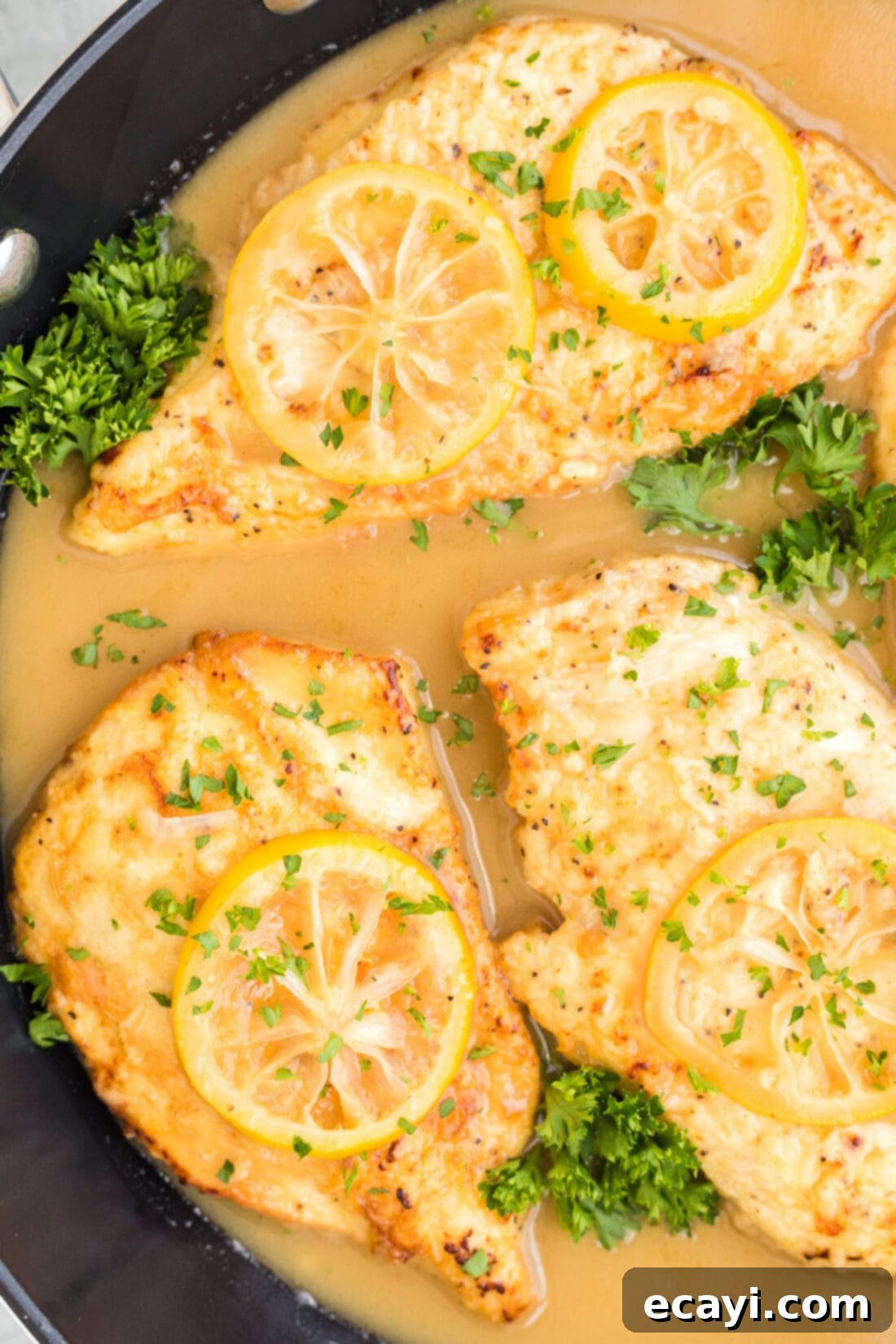
Why This Chicken Francese Recipe Works Every Time
Chicken Francese is a testament to how simple techniques and fresh ingredients can yield extraordinary results. This recipe shines for several key reasons, making it a favorite for home cooks seeking both ease and elegance. Often compared to its cousin, chicken piccata, Chicken Francese shares the fundamental technique of preparing thin, tender chicken cutlets. The chicken breasts are first pounded to a uniform thinness, which is crucial for even and quick cooking, ensuring every bite is succulent and perfectly done. After being tenderized, the chicken is dredged, first in seasoned flour, then in a light egg wash. This specific “Francese” style breading—meaning “French-style” in Italian, though the dish itself is a staple of Italian-American cuisine—creates a delicate, golden-brown crust that locks in moisture and provides a fantastic texture contrast to the tender chicken within.
The magic of Chicken Francese truly lies in its vibrant lemon-butter sauce. The combination of lemon and chicken is a classic pairing, and for good reason. The acidity of the lemon cuts through the richness of the butter and complements the savory chicken, preventing the dish from being heavy. It brightens the entire flavor profile, elevating otherwise plain chicken breasts into something truly refreshing and memorable. The addition of white wine adds another layer of sophisticated flavor, contributing to the sauce’s depth and complexity without being overpowering. This dish is not only quick to prepare, but it also creates an impressive meal that looks and tastes like it took hours of effort. It’s the perfect harmony of simple ingredients, clever technique, and a burst of refreshing flavor that makes this easy chicken francese recipe a guaranteed success in any kitchen.
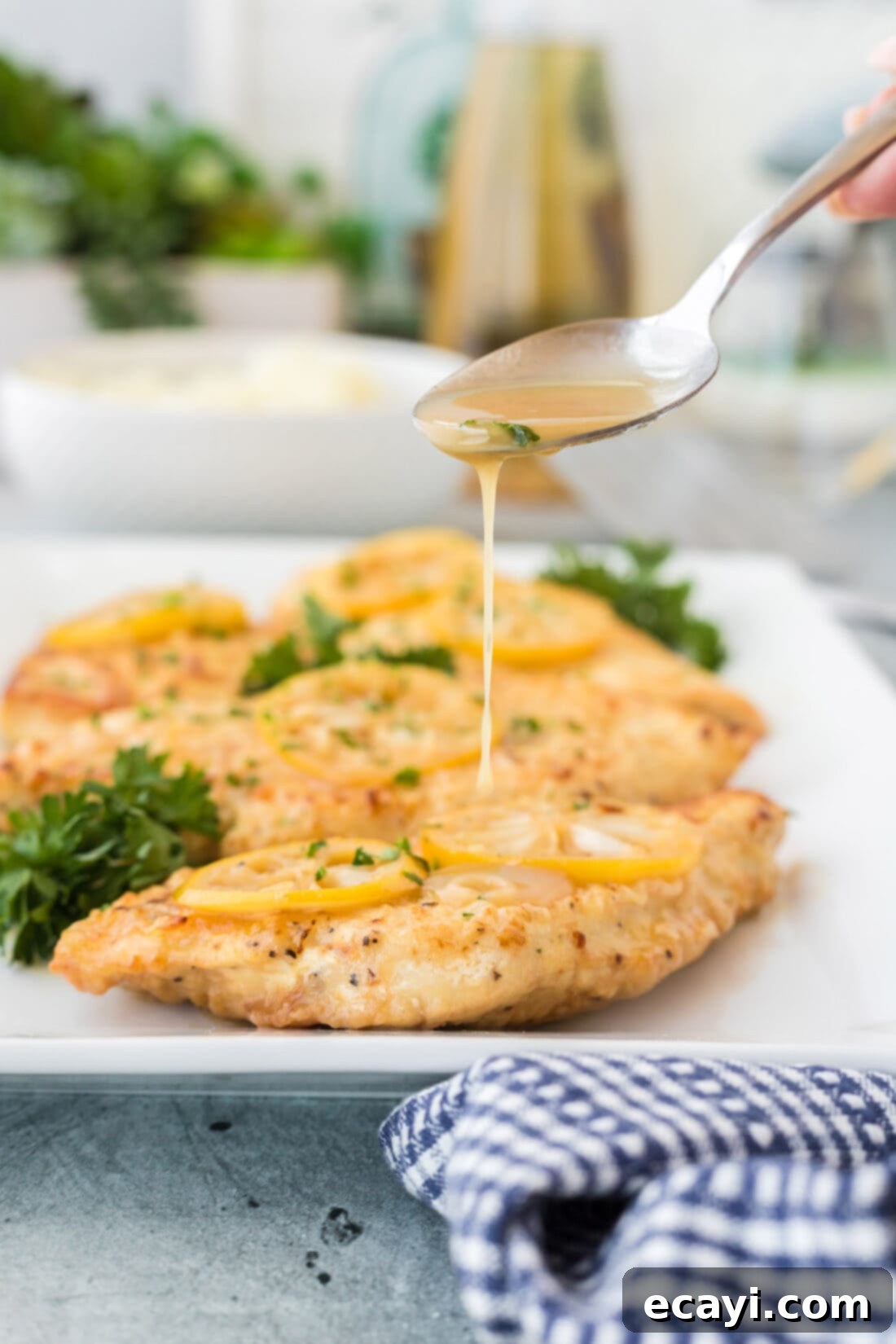
Key Ingredients for Authentic Chicken Francese
Crafting the perfect Chicken Francese begins with selecting the right ingredients. While simple, each component plays a vital role in achieving the dish’s signature flavor and texture. You can find all precise measurements, a comprehensive list of ingredients, and detailed instructions in the printable recipe card located at the end of this post.
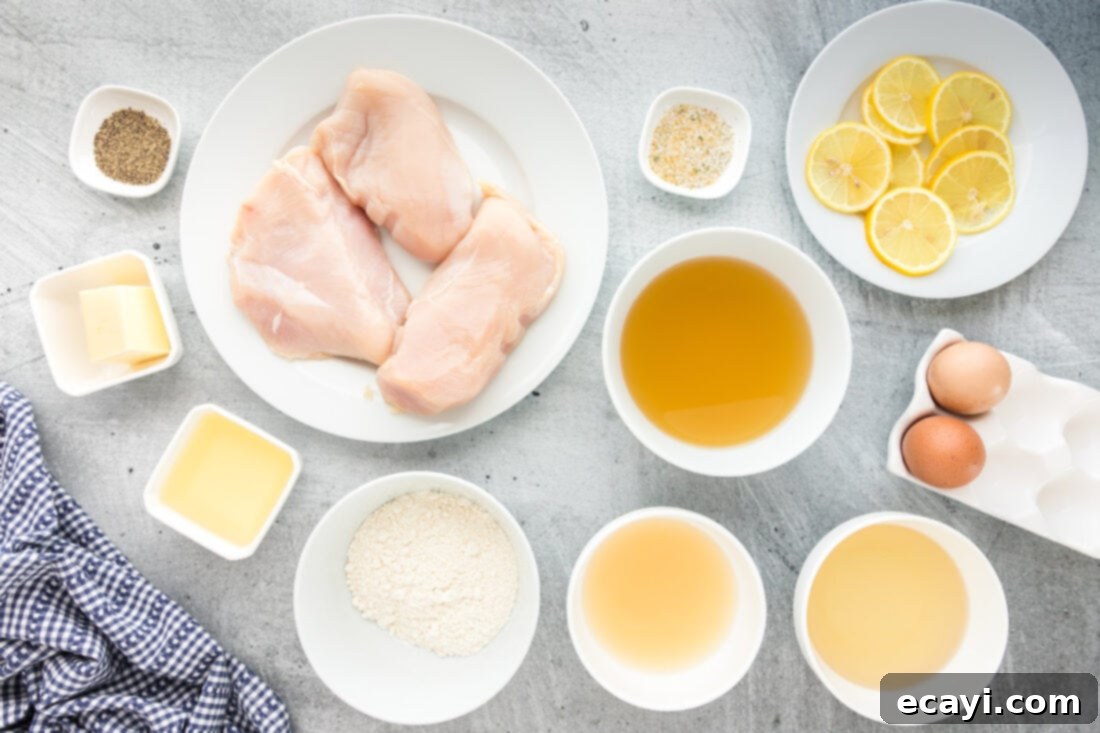
Ingredient Spotlight & Smart Substitutions
Understanding each ingredient and its role allows for mastery of this dish and confident substitutions when needed:
CHICKEN – We use boneless, skinless chicken breasts for this recipe. Pounding the chicken to an even thickness of about 3/4-inch is absolutely essential. This not only tenderizes the meat but also ensures that each cutlet cooks evenly and quickly, preventing some pieces from drying out while others remain undercooked. You can use chicken cutlets if available, which are already thin, saving you a step.
WINE – A dry white wine, such as Chardonnay or Pinot Grigio, is recommended for the sauce. The wine adds a subtle acidity and a layer of complex flavor that enhances the overall richness. During cooking, the alcohol evaporates, leaving behind only the delicious essence. If you prefer to omit the white wine for dietary reasons or simply don’t have it on hand, you can substitute it with an equal amount of chicken broth. While the flavor profile will be slightly different, it will still yield a delicious and savory sauce.
LEMON – Chicken Francese is known for its bright, zesty lemon flavor. This recipe calls for a generous amount of fresh lemon juice, which is crucial for the refreshing taste. For the best flavor, always use freshly squeezed lemon juice rather than bottled. The fresh zest of a lemon can also be added to the sauce for an even more intense citrus aroma. If you prefer a more subtle lemon flavor, you can replace a portion of the lemon juice in the recipe with an equal amount of chicken stock. This will mellow out the tang while still maintaining a pleasant acidity.
FLOUR & EGGS – The dredging process is what gives Chicken Francese its characteristic golden crust. The flour, seasoned with garlic salt and pepper, creates a base layer, while the egg wash provides adhesion for frying and contributes to the tender, delicate exterior. All-purpose flour works best here. The egg wash should be lightly whisked with a tablespoon of water to achieve the right consistency for coating the chicken.
OLIVE OIL & BUTTER – Olive oil is used for pan-frying the chicken cutlets, imparting a delicate flavor and ensuring a beautiful golden-brown sear. Butter is then incorporated into the sauce at the end, adding a luxurious creaminess and richness that perfectly balances the lemon and wine. Using unsalted butter allows you to control the overall saltiness of the dish.
Step-by-Step Guide: How to Make Chicken Francese
These step-by-step photos and detailed instructions are here to help you visualize how to make this delicious recipe. For a quick reference or to print the full recipe with precise measurements and instructions, simply Jump to Recipe at the bottom of this page.
- Prepare the Chicken: Begin by placing your boneless, skinless chicken breasts between two sheets of plastic wrap or waxed paper. Using a meat mallet, gently but firmly pound the chicken to an even thickness of approximately 3/4-inch. This step is vital for tender results and uniform cooking.

- Season the Flour: In a medium-sized shallow bowl, combine the all-purpose flour with garlic salt and black pepper. Whisk these ingredients together until well combined. This seasoned flour will be the first layer of your chicken’s delicious coating. Dredge each pounded chicken breast thoroughly in the flour mixture, ensuring it’s completely coated.


- Create the Egg Wash: In a separate shallow dish or plate, whisk together the eggs and water until smooth. This egg wash creates the second coating layer, helping the flour adhere and forming a delicate crust when fried. After dredging in flour, dip each chicken breast into the egg mixture, allowing any excess to drip off.


- Pan-Fry the Chicken: Heat olive oil in a large skillet over medium-high heat. The oil should be shimmering but not smoking. Carefully add the coated chicken breasts to the hot oil, ensuring not to overcrowd the pan. Cook each side for 2-3 minutes, or until beautifully golden brown and cooked through. Depending on the size of your skillet, you may need to cook the chicken in batches.


- Sauté Lemon Slices: Once cooked, remove the chicken breasts from the skillet and set them aside on a plate, tented with foil to keep warm. Add the fresh lemon slices to the remaining pan juices in the skillet. Sauté them for about a minute or so per side, allowing them to slightly caramelize and release their aromatic oils into the pan. This infuses the sauce with even more fresh lemon flavor.

- Deglaze and Simmer: Pour in the fresh lemon juice, chicken stock, and dry white wine (if using) into the skillet. Bring the mixture to a gentle boil, whisking occasionally to scrape up any flavorful brown bits (fond) from the bottom of the pan. This process, known as deglazing, adds immense depth to your sauce. Allow the sauce to simmer for 3-4 minutes, which helps to cook off the alcohol from the wine and slightly reduce the liquid, concentrating its flavors.



- Thicken the Sauce: Take the butter and press it into the remaining flour mixture, coating it completely. This “beurre manié” method helps to thicken the sauce and add richness without creating lumps. Add the flour-coated butter to the simmering skillet. Allow the butter to melt down, stirring or whisking occasionally to combine the flour and butter with the pan sauce. Continue to whisk and cook for another 3-5 minutes, or until the sauce thickens to your desired consistency. It should be rich and silky.



- Finish and Serve: Return the cooked chicken breasts to the skillet, nestling them into the luscious lemon-butter sauce. Allow the chicken to heat through for approximately 2-3 minutes, absorbing the wonderful flavors of the sauce. Garnish with fresh parsley or additional lemon slices if desired, and serve immediately.

Frequently Asked Questions & Expert Tips for Chicken Francese
For food safety, chicken is fully cooked when it reaches an internal temperature of 165°F (74°C). We highly recommend using an instant-read thermometer inserted into the thickest part of the chicken to ensure accurate temperature and perfectly cooked, juicy results.
Leftover Chicken Francese can be stored in an airtight container in the refrigerator for 3-4 days. To reheat, gently warm in a skillet over medium-low heat with a splash of chicken broth or water to keep the sauce from becoming too thick, or microwave until heated through. Be careful not to overcook when reheating to maintain tenderness.
While both dishes feature thin, pan-fried chicken cutlets in a lemon-butter sauce, the key difference lies in the dredging and additional ingredients. Chicken Francese typically involves dredging the chicken first in flour, then in an egg wash, creating a tender, delicate coating. Its sauce often includes white wine. Chicken Piccata, on the other hand, is usually just dredged in flour before frying, and its sauce famously includes capers, giving it a brinier, saltier kick compared to the smoother, wine-infused lemon sauce of Francese.
Yes, you can easily adapt this recipe to be gluten-free. Simply substitute the all-purpose flour with a high-quality gluten-free all-purpose flour blend (one that contains xanthan gum works well) for dredging the chicken and for coating the butter to thicken the sauce. The rest of the ingredients are naturally gluten-free.
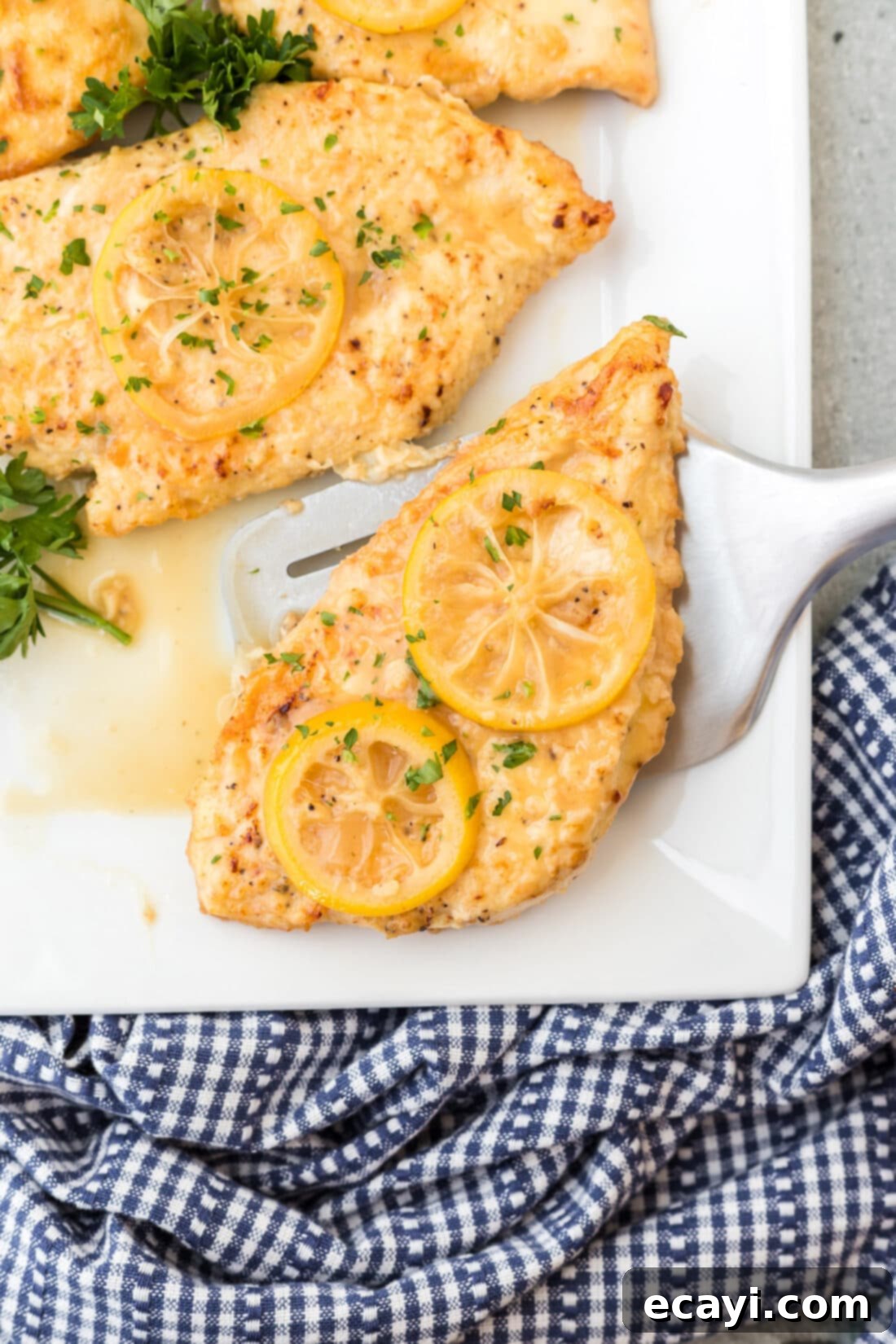
Serving Suggestions for Chicken Francese
Chicken Francese is a versatile dish that pairs beautifully with a wide array of side dishes, making it suitable for any meal, from a casual family dinner to a more formal gathering. For a truly satisfying and classic experience, try serving it over a bed of al dente pasta, such as linguine or fettuccine, allowing the delicious lemon-butter sauce to coat every strand. Alternatively, fluffy white rice or even creamy polenta would be excellent choices to soak up the exquisite flavors.
If you’re looking for comforting side dishes, consider serving it alongside a generous helping of crockpot mashed potatoes or rich au gratin potatoes. To balance the richness of the dish, roasted or steamed vegetables are a fantastic option. Asparagus, green beans, broccoli, or a medley of colorful bell peppers tossed with a little olive oil and garlic would add both nutrition and vibrant color. A simple side salad with a light vinaigrette also provides a refreshing contrast. Don’t forget a sprinkle of fresh chopped parsley or basil as a garnish, adding a final touch of herbaceous flavor and visual appeal to your elegant meal.
More Delicious Chicken Recipes to Explore
If you love the versatility and flavor of chicken, we have a multitude of other recipes to inspire your culinary adventures. From quick weeknight dinners to impressive entertaining options, there’s a chicken dish for every occasion. Discover more ways to enjoy this lean protein with our curated selection:
- Garlic Chicken
- Chicken Marsala
- Marry Me Chicken
- Chicken Cacciatore
- Pretzel Chicken with Honey Mustard Dressing
- Lemon Chicken
I love to bake and cook and share my kitchen experience with all of you! Remembering to come back each day can be tough, that’s why I offer a convenient newsletter every time a new recipe posts. Simply subscribe and start receiving your free daily recipes!
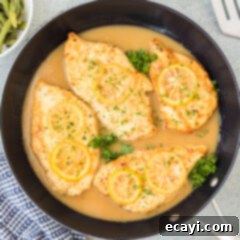
Chicken Francese
IMPORTANT – There are often Frequently Asked Questions within the blog post that you may find helpful. Simply scroll back up to read them!
Print It
Pin It
Rate It
Save ItSaved!
Ingredients
- 1 ½ pounds boneless skinless chicken breasts about 4 breasts
- ½ cup all-purpose flour
- ½ Tablespoon garlic salt
- 1 teaspoon black pepper
- 2 large eggs
- 1 Tablespoon water
- ½ cup olive oil
- 8 lemon slices
- ½ cup lemon juice about 2 1/2 lemons worth of juice
- 2 cups chicken stock
- ½ cup dry white wine such as chardonnay
- 3 Tablespoons butter
Things You’ll Need
-
Large skillet
-
Meat mallet
-
Vinyl gloves
Before You Begin
- Pounding the chicken to an even thickness allows the chicken to cook evenly and quickly. Aim for about 3/4-inch for optimal tenderness and cooking time.
- This is a very lemony dish, showcasing the bright citrus flavor. If you prefer a more subtle lemon taste, you can replace half of the lemon juice in the recipe with an equal amount of chicken stock.
- For food safety and perfectly juicy chicken, ensure it reaches an internal temperature of 165°F (74°C) on an instant-read thermometer.
- Store leftover Chicken Francese in an airtight container in the refrigerator for 3-4 days. Reheat gently in a skillet or microwave.
Instructions
-
Cover chicken breasts with plastic wrap or waxed paper and pound to an even thickness, about 3/4-inch.
-
In a medium bowl, whisk together flour, garlic salt, and pepper. Dredge each chicken breast in flour mixture.
-
Whisk together eggs and water and place in a shallow dish or plate. Dip each dredged chicken breast in the egg.
-
In a large skillet, heat olive oil over medium-high heat until shimmering.
-
Add each chicken breast to the hot oil and cook for 2-3 minutes per side, until golden brown and cooked through.
-
Remove chicken and set aside, tented with foil to keep warm. Add lemon slices to the pan juices. Cook for a minute or so per side.
-
Add lemon juice, chicken stock and white wine to the skillet and bring to a boil. Whisk occasionally to loosen brown bits. Cook for 3-4 minutes to cook off some of the wine and slightly reduce the sauce.
-
Place butter in remaining flour mixture and turn to coat. Add flour coated butter to the skillet and allow to melt down, stirring occasionally to combine flour with sauce. Whisk and cook for 3-5 minutes, or until sauce thickens to your desired consistency.
-
Add chicken back to the sauce in the skillet and heat through, about 2-3 minutes, ensuring the chicken is coated and warmed. Serve immediately.
Nutrition
The recipes on this blog are tested with a conventional gas oven and gas stovetop. It’s important to note that some ovens, especially as they age, can cook and bake inconsistently. Using an inexpensive oven thermometer can assure you that your oven is truly heating to the proper temperature. If you use a toaster oven or countertop oven, please keep in mind that they may not distribute heat the same as a conventional full sized oven and you may need to adjust your cooking/baking times. In the case of recipes made with a pressure cooker, air fryer, slow cooker, or other appliance, a link to the appliances we use is listed within each respective recipe. For baking recipes where measurements are given by weight, please note that results may not be the same if cups are used instead, and we can’t guarantee success with that method.
